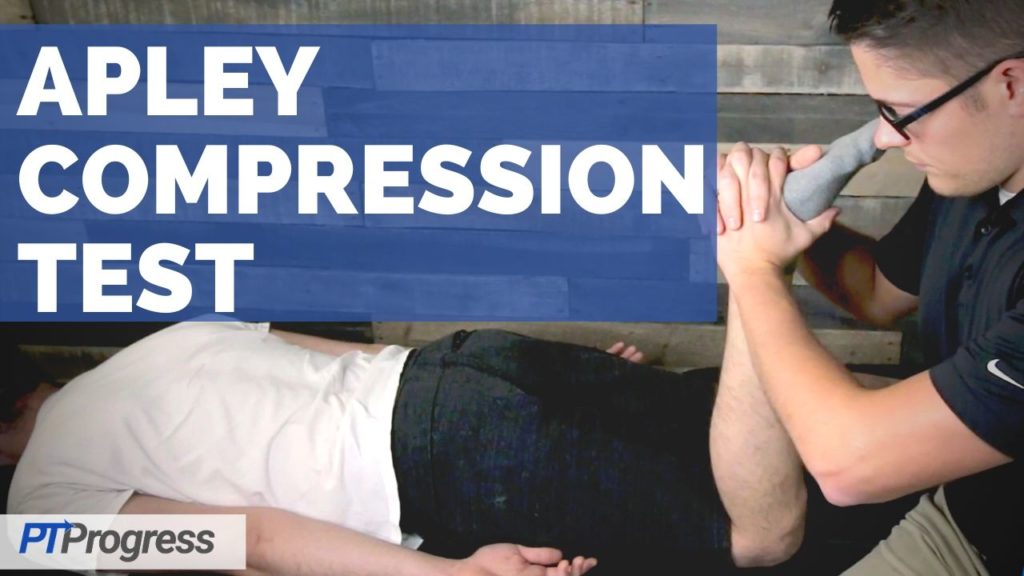
Purpose: The Apley Compression test or Apley Grind test is used to assess the integrity of the medial and lateral meniscus.
How to Perform the Apley Compression Test
Position of Patient: The patient should be positioned in prone.
Performance: The examiner will place the patient’s knee into 90 degrees of flexion and apply a firm grasp at the patient’s heel. While applying a downward axial loading force, the examiner will rotate the leg medially and laterally.
The examiner may also perform a distraction test in this position. While stabilizing the patient’s thigh against the table, the examiner will provide a distraction force upwards and also rotate the leg internally and externally.
How to Interpret the Apley Compression Test
Positive Finding: A positive test occurs when pain or popping is noted with rotation during the compression test.
Relief of symptoms with distraction or presentation of pain elsewhere in the knee may support your findings for a positive compression test.
Test Accuracy / Reliability / Evidence:
Sensitivity: 0..38
Specificity: 0.84
+LR: 2.4
-LR: 0.73
Source: Ockert B, Haasters F, Polzer H, et al: [Value of the clinical examination in suspected meniscal injuries. A meta-analysis]. Unfallchirurg 2010; 113: pp. 293-299
Source: Dervin GF, Stiell IG, Wells GA, et al: Physicians’ accuracy and interrator reliability for the diagnosis of unstable meniscal tears in patients having osteoarthritis of the knee. Can J Surg 2001; 44: pp. 267-274
Apley Compression Test Video
The Apley Compression test or Apley Grind test is used to assess the integrity of the medial and lateral meniscus.
To perform the Apley compression test, the patient should be positioned in prone. The examiner will place the patient’s knee into 90 degrees of flexion and apply a firm grasp at the patient’s heel. While applying a downward axial loading force, the examiner will rotate the leg medially and laterally. A positive test occurs when pain or popping is noted with rotation. The examiner may also perform a distraction test in this position. While stabilizing the patient’s thigh against the table, the examiner will provide a distraction force upwards and also rotate the leg medially and laterally. Relief of symptoms with distraction or presentation of pain elsewhere in the knee may support your findings for a positive compression test.
Next Special Test: McMurray Test

